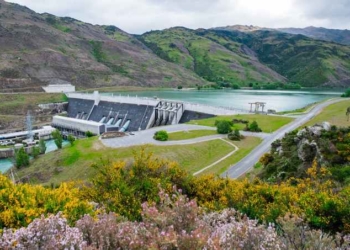
Over the last couple of decades, environmental awareness and green initiatives have gained quite a lot of exposure. The reasons behind this are apparent. For a start, resources like gas, oil, and coal are finite. Our energy needs are not. As a matter of fact, energy demand is only expected to expand by 55% by 2030, according to The International Energy Agency`s 2007 World Energy Outlook. The less we say about the effects fossil fuels have on the environment, the better.
But, being aware of the problem is still very far from finding solutions. So, let us take a look at a couple of ways the big industries can be put on greener foundations and thus secure a more sustainable future.
Forming the Energy Management Committees
Any endeavor that is meant to produce tangible results should not be planned and executed half-heartedly. In terms of big industries and green initiatives, this commitment can be implemented by forming “green committees” with the sole purpose of exploring the energy wastes, conducting audits, and finding ways to optimize consumption. These committees should include employees from all levels ranging from ordinary workers to senior management. Of course, tangible results should be rewarded with adequate bonuses.
Managing the lighting
Although power spent on lighting seems tiny compared to other expenses made by the industrial sectors, the recent research says that lighting in manufacturing facilities burns 55 billion kWh, which roughly amounts to 1.4% of total US electricity consumption. These numbers should not be ignored – even more so taking into consideration that this problem can be easily addressed by maximizing the natural light (expanding the window space), scheduling the shifts to utilize that natural lights, and replacing the traditional bulbs with their energy-efficient counterparts.
Moving on to more efficient equipment
Big industries are often deeply rooted in the legacy infrastructure designed in a time when efficiency issues were still not in the first place. However, relying on such systems today can no longer be justified. It’s also important to underline that every piece of more efficient equipment produces great cumulative results in the long run. For instance, an effective double offset butterfly valve like the ones that are currently used in modern industrial facilities wastes far less energy than the previous iterations of the product. And the upgrades like this don't even require extensive structural changes.
Introducing a greater level of automation
Human intelligence can't be truly emulated in the aspects of creativity, ingenuity, or decision-making. However, the human brains are simply not wired to handle complex math equations as well as incomprehensible, highly structured sets of data. Unfortunately, both these things are necessary for seamless and efficient industrial production. Because of that, the companies that are striving to improve their energy efficiency and make production more sustainable should introduce a greater level of automation and leave on-site management and decision-making to AI.
Improving insulation and HVAC systems
In this regard, large industrial facilities are not that different from regular households. In spite of all modern technological developments that benefit the industrial sector, one of the simplest and yet most efficient ways of cutting the energy expenditure is by insulating the facilities and improving the efficiency of HVAC systems. According to a recent report by Ecofys, better insulation can save roughly 4% of the European industry's total fuel consumption, which translates to 3.5 billion euros a year. For a reminder, these numbers don't even include the energy wasted by dated HVAC equipment.
Encouraging clean transportation
When we talk about the sustainability of the modern industrial sector, we usually narrow down the story to industrial facilities and the ways they can be made more energy-efficient. This, however, ignores millions of commuting workers that are producing an environmental impact that is very hard to ignore. The responsibility of businesses in such circumstances is to encourage workers to use green transportation methods (public transport, bikes, hiking, etc.) to commute to their workplaces. These initiatives should be accompanied by adequate green incentives.
With the advancement of technology, transportation professionals like automotive engineers continue to find ways to design and introduce eco-friendly vehicles in the market. Many car makers or auto companies introduce electronic or e-cars that are powered by solar power or electricity. These e-cars are more efficient and don’t consume gasoline or fuel, which causes carbon emissions.
Just imagine the high percentage of vehicles responsible for carbon emissions that will be cut off when people will switch to e-cars. In addition, people will have cleaner air to breathe because of reduced vehicle smoke and pollution, especially in urban areas. Hence, clean transportation also promotes better public health. Having clean transportation can undoubtedly help people’s lives in many amazing ways.
Switching to green market corners
Last but not least, setting new rules is often easier than trying to apply fresh ideas to dated foundations. Take Tesla, for example. A company that has almost single-handedly reinvented the automotive industry and now leads the pack in the eco-friendly industrial game. So, instead of trying to adapt their current facilities and production processes to ever-rising green industry tendencies, the current businesses could try to explore some of the fresh ideas for eco-minded entrepreneurs and simply switch the lane when they see fit.
You’ll find auto insurance providers also practicing environmental awareness or being “green”. For instance, an insurance provider that offers the cheapest green slip in NSW also engages in sustainable business practices. The company plants a tree for every insurance policy sold, which helps in reducing greenhouse gas emissions. Planting trees can help neutralize carbon gas emissions that can cause climate change and other ill environmental effects.
Drivers can make a significant contribution to the planet by supporting insurance providers practicing green or eco-friendly business practices. Eco-minded business owners can always find ways to help protect the planet.
We hope these few mentions gave you some general idea about the ways in which the contemporary industrial sector can jump the bandwagon and join the global environmental movement. The situation in which our economy and, for that matter, our planet currently are can be best described as urgent, and the quick reaction is all but necessary. The list of methods to address this issue grows with each passing day. All we need now is the willingness to take action.















